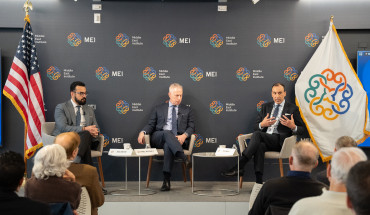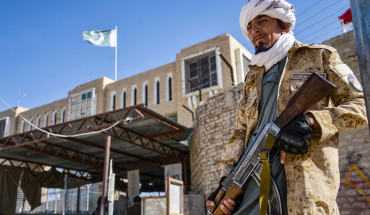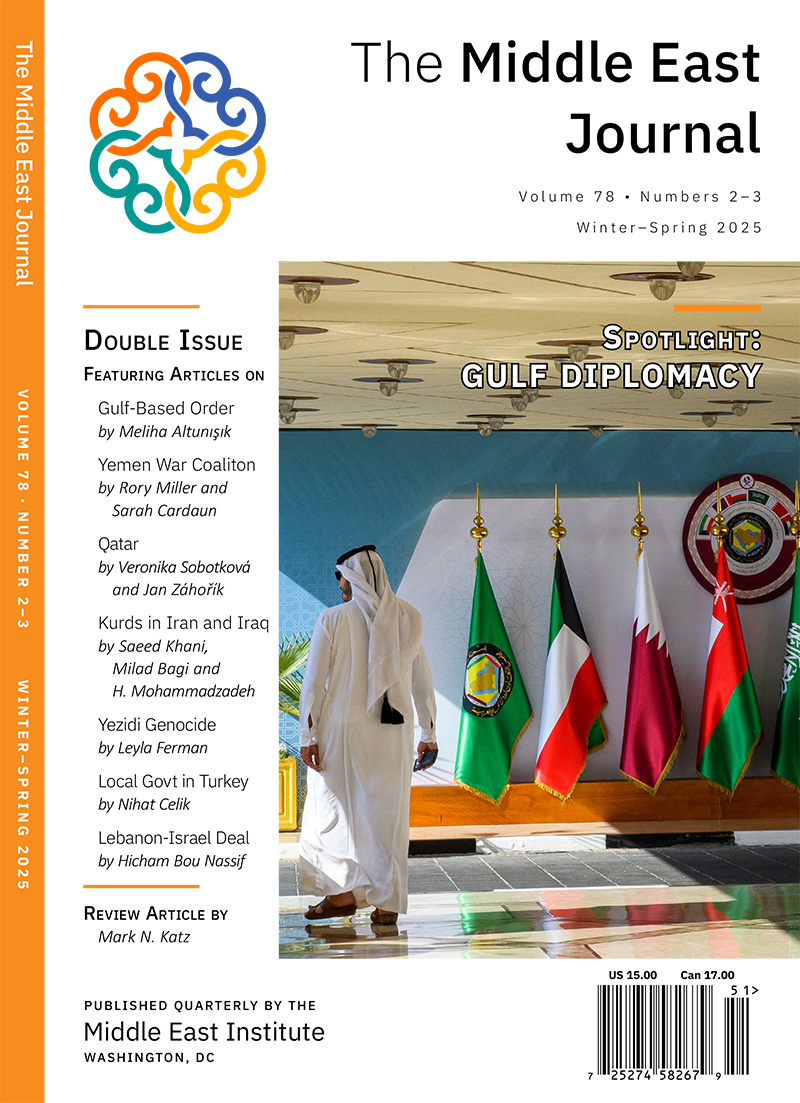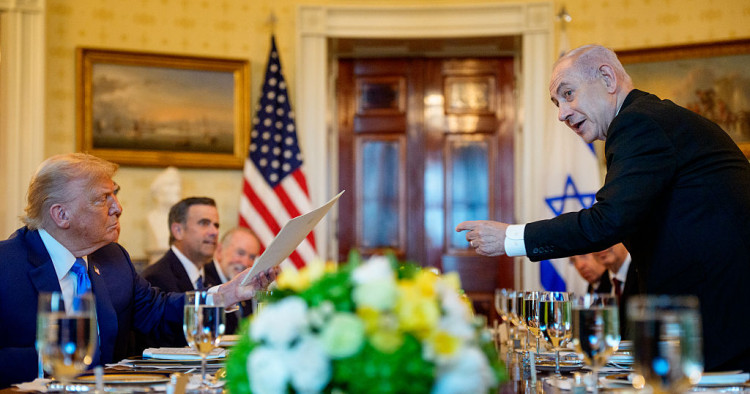US President Donald Trump hosted Israeli Prime Minister Benjamin Netanyahu for the third time in his second term this week, shortly after securing a major victory for his domestic policy agenda in the budget bill passed by Congress.
Netanyahu’s visit comes at a time when much remains unresolved in Trump’s Middle East agenda. Another cease-fire in Gaza has yet to be struck, though could be days away. Questions about what comes next with Iran continue to swirl. And broader aspirations for regional normalization accords require additional diplomatic groundwork to progress any further.
Trump finds the rest of the world less pliant than his own political party
Trump saw a signature achievement when Congress narrowly passed his major tax and budget legislation along party lines on July 3. In less than six months in office, Trump has taken significant steps to remake America’s economy and administrative state with a costly bill that cuts taxes, eliminates many social safety net programs, and makes unprecedented investments of billions of dollars in his harsh immigration approach.
But Trump is experiencing bigger uphill battles in advancing his major agenda items on the international front. His plan to implement steep global tariffs has not yet fully come into shape, as he kicks the can down the road again and buys more time for trade negotiations. A few months ago, his team promised “90 deals in 90 days,” but only two of those trade deals have taken shape so far, and there is much work left undone in economic relations with important global economic partners and competitors alike.
Russian President Vladimir Putin continues to snub Trump’s efforts to end Moscow’s war against Ukraine. Trump’s zigzagging policy messages on Russia lack coherence — his team cut off weapons to Ukraine last week and the president reversed them this week, sanctions are not fully implemented, and Russia continues its assault unabated well past the single day Trump asserted it would take him to end the war. Some of this may be the consequence of internal disarray and lack of coordination inside of the administration — as witnessed recently in the flubbed efforts to secure a prisoner release in Venezuela when one hand of team Trump 2.0 was not coordinating with the other.
But the impression this leaves with the rest of the world is one of an administration that might not be able to achieve its stated goals on foreign policy, reinforcing the long-standing crisis of efficacy in US foreign policy that has been present over the last several American administrations, Republican and Democrat alike.
Netanyahu’s third visit in 2025: More optics than outcomes
It was in this wider context that Israel’s leader visited Washington to meet with Trump this week, a trip that appeared more like a desperate public relations stunt aimed at shoring up the poor domestic political standing both Netanyahu and Trump have in their respective countries. First of all, it was seemingly to claim credit for the damage done to Iran and its nuclear program in the 12-day war; but the challenges posed by Iran still loom large for the region. More than two weeks after the conflict ended, no clear pathway for diplomacy has yet emerged — and diplomacy is an essential ingredient to ensure that Iran does not embark on a quick drive to obtain a nuclear weapon. Trump met with Saudi Defense Minister Prince Khalid bin Salman in Washington on July 3; Saudi Arabia, like the rest of the Arab Gulf countries, is seeking a pathway to de-escalation of tensions.
Meanwhile, the biggest unfinished business for the wider Middle East remains on the Gaza front, where talks between Israel and Hamas continue and hopes for a new cease-fire and hostage release deal have increased slightly in recent days. The continuing humanitarian disaster unfolding in Gaza, along with the wider missed opportunity to forge a lasting settlement to the Israeli-Palestinian conflict, are major impediments to a more stable Middle East.
The consensus across much of the wider region remains clear: a pathway toward a two-state solution is needed to stabilize the Middle East’s broader interstate system as well as to unlock the more active engagement of wealthy and capable Arab countries. Their involvement is necessary to support a shift from current period, dominated by war, toward one that prioritizes peace.
But making this shift requires strong leadership — both in the region and in the United States. And this leadership needs to be backed up by teams that are not only coordinated inside of their respective governments but also working within a wider collective diplomatic effort forging ahead toward peace. After nearly two years of a Middle East dominated by war and conflict, aspirations for peace, normalization, and regional integration require leaders who are willing to take risks that could undercut their domestic support and build bridges across regional divides. It is one thing to eliminate threats and enemies in war — but the task of building peace and sustainable security that produces concrete results requires years of concerted efforts, not just strategic communications and photo ops.
Brian Katulis is a Senior Fellow at the Middle East Institute.
Photo by Andrew Harnik/Getty Images
The Middle East Institute (MEI) is an independent, non-partisan, non-for-profit, educational organization. It does not engage in advocacy and its scholars’ opinions are their own. MEI welcomes financial donations, but retains sole editorial control over its work and its publications reflect only the authors’ views. For a listing of MEI donors, please click here.













